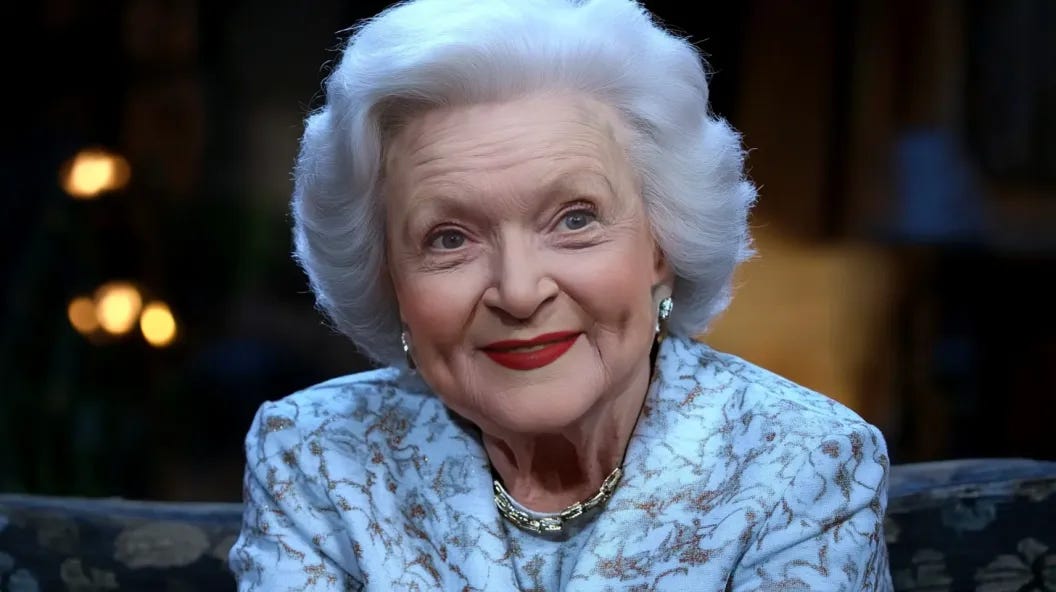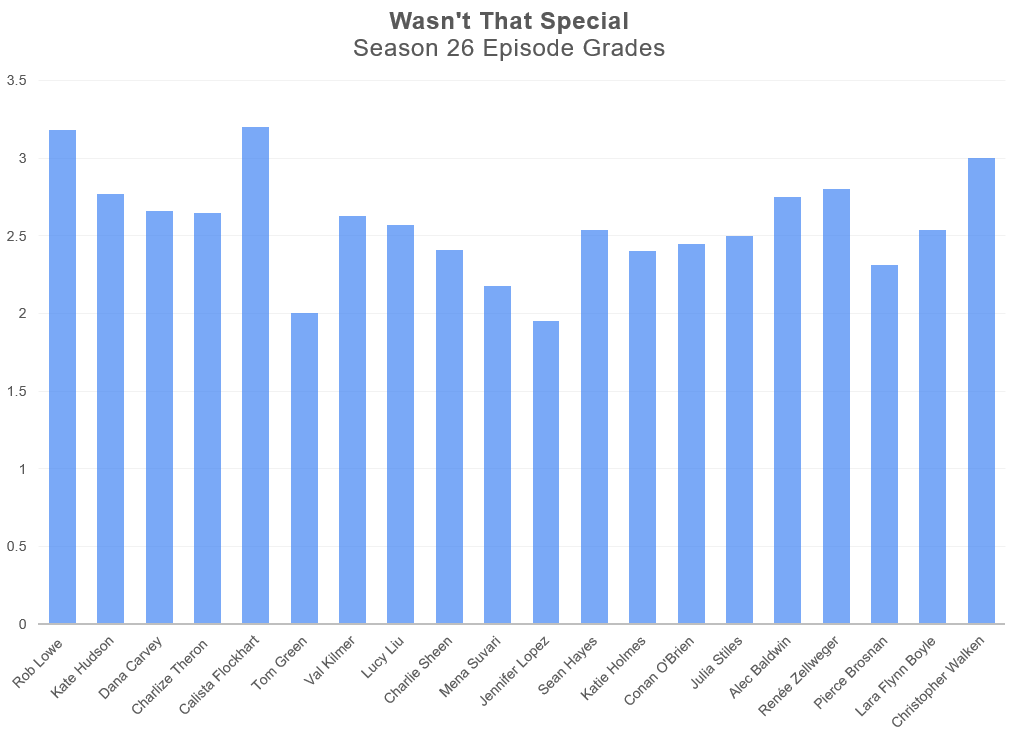SNL By the Numbers, the First 35 Years
Calling our little operation here an “academic” pursuit is like calling Taco Bell authentic Mexican food, but we remain vigilant in trying to apply rigorous analysis to the quality of Saturday Night Live throughout the years.
To that end, we continue to code each and every sketch from every episode and every season, so we can accurately describe how the quality of the show ebbs and flows over the years. This way we can apply actual facts as opposed to our vague, hazy, youthful memories.
Every few seasons, we drop a post letting you know how the grading system is going. (For seasons 1-25, go here (13-25, here (9-13), here (6-8), here (5), and here (1-4).)
Below is an updated chart showing our season-by-season grades through Season 35.
The grading scale is simple: an all-time classic sketch gets a “5,” while only the most appalling sketches get a “1.” A pretty average episode will come in at around a 2.5, while a really good episode will top 3.0.
What does the chart tell us about full seasons? It shows that when it first began, SNL began to build as it refined its process, leading to a legendary Season 3. The show then backtracked significantly in Season 5, when John Belushi and Dan Aykroyd left, then totally cratered in the infamous Season 6, when Lorne Michaels bolted and an entirely new cast was brought in under the eye of new executive producer Jean Doumanian.
The show remained middling throughout the early 1980s, with Eddie Murphy dragging it up in Season 8. Michaels returned in Season 11, and in Season 12, he brought in the cast that would generate the best seasons in show history. Seasons 12 through 18 (roughly) are the Dana Carvey/Phil Hartman/Jon Lovitz/Dennis Miller years, and three of those seasons sit atop our all-time season rankings. (During this era, it also enjoyed the benefit of having ringers like Robert Smigel, Conan O’Brien, and Bob Odenkirk in the writers’ room.)
The show then collapsed in seasons 19 and 20, and with Chris Farley and Adam Sandler getting the boot in 1995, SNL hired Will Ferrell to turn the ship around. And Ferrell did that, leading the show to above-average scoring seasons for seven straight years (21-27).
After a brief dip in seasons 28-30, the show brought in a murderer’s row of new cast members in Season 31, from Kristen Wiig to Andy Samberg to Bill Hader to Jason Sudeikis. (Technically, Sudeikis joined the cast at the very end of Season 30.) As this group matured, the seasons got better and better, leading to some of the best years in show history.
In Live From New York, the oral history of SNL written by Tom Shales and James Andrew Miller, Smigel had this to say about the years between Season 31 and 35 (my emphasis added):
ROBERT SMIGEL: That era sort of defied the argument you always hear that “SNL needs to have something for everyone… if you don’t hate a few sketches, we’re not doing our job, et cetera.” That cast—especially around my last few years there—had a very consistent sensibility. They worked as a team in a way that I don’t really remember ever feeling in any of the eras that I worked there, as great as those other groups were. So many combinations of performers yielded brilliant, weird sketches, like “Potato Chip” with Forte and Sudeikis. Top to bottom, probably the hippest group since the originals—that whole universe that started with Fred and Kristen and Forte and expanded to Samberg and Bill Hader and the rest. And you still had people like Amy and Maya for a hunk of this time. They were great performers and they were all writers… and Seth really let the cast blossom and wrote funny, smart stuff on top of it. I feel like it should be looked at as a golden era, but I don’t know if it gets that credit. Maybe it’s because of the shadow of Ferrell; they had to follow the greatest cast member ever.
We can’t argue with Smigel - by avoiding truly terrible sketches and putting out a few classic episodes, the seasons in the early 30 range rank among the show’s best (largely on the back of Wiig’s supernatural talent.)
Here’s a look at the individual episodes in seasons 26 through 35:
When we look at the top 15-rated episodes of the first 35 years, we get:
Steve Martin, Season 3, Episode 18 (3.87 grade)
Tom Hanks, Season 14, Episode 1 (3.85)
David Alan Grier, Season 21, Episode 8 (3.65)
Christopher Walken, Season 18, Episode 4 (3.625)
Tom Hanks, Season 16, Episode 8 (3.6)
Steve Martin, Season 4, Episode 4 (3.55)
Betty White, Season 35, Episode 21 (3.45)
Ralph Nader, Season 2, Episode 11 (3.4)
Paul Simon, Season 13, Episode 8 (3.4)
Julia Louis-Dreyfus, Season 31, Episode 18 (3.4)
Stevie Wonder, Season 8, Episode 19 (3.38)
Eric Idle, Season 5, Episode 2 (3.35)
Jerry Seinfeld, Season 17, Episode 18 (3.35)
Michael Jordan, Season 17, Episode 1 (3.31)
Tom Hanks, Season 17, Episode 19 (3.31)
That’s three Hankses, two Martins, and only one Walken. Oddly, no single Alec Baldwin episode had cracked the list, despite his status as one of the show’s greatest all-time hosts.
To keep up to date on our ongoing project, please subscribe to Wasn’t That Special either on a monthly or annual basis. And if you subscribe at the Executive Producer level, you get a whole bunch of extra benefits, from our clips package to our behind-the-scenes notes. Join now!













Seth Meyers gets chuckles from the Lonely Island boys every time he refers to the time on the show they are discussing as a Golden Era on their podcast.
Essentially goofing on the idea of bias towards the years he was THE GUY in the writers room and behind the WU desk.
Someone should send this work to them as empirical evidence that Meyers is talking sheer facts whenever he calls the late aughts-early teens as a “Golden Era” for the show! ;)